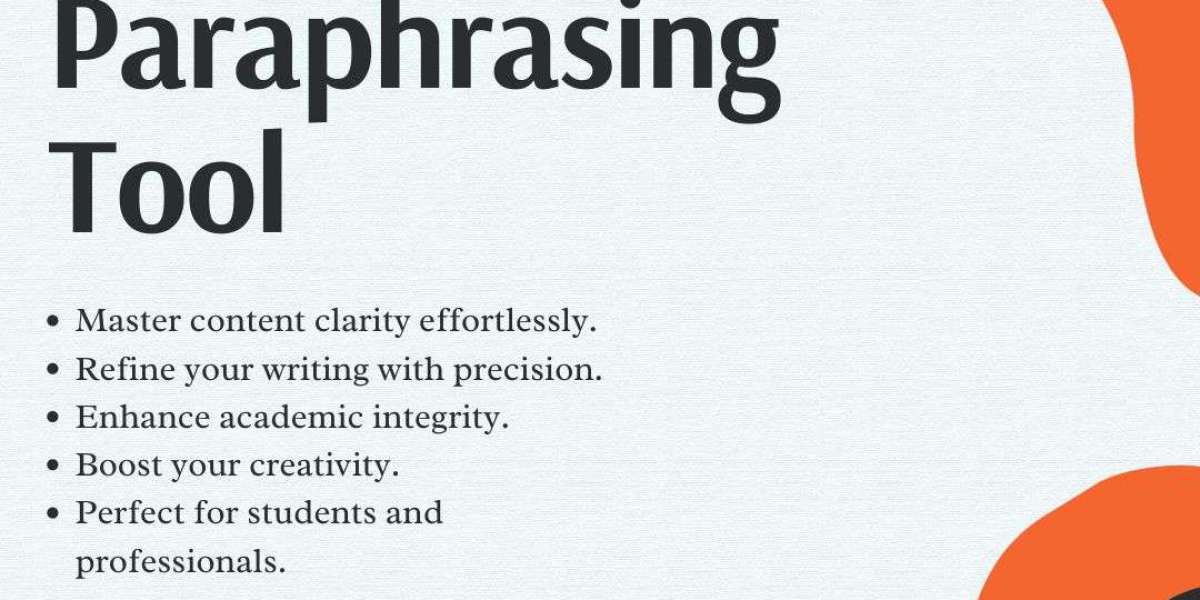As artificial intelligence continues to shape the way we communicate, AI paraphrasing tools have emerged as essential resources in the content creation landscape. Designed to help users generate unique, rephrased versions of existing text, these tools are invaluable for students, writers, marketers, and anyone who needs to convey ideas clearly and originally. But what exactly powers these tools, and why are they becoming such integral assets?
In this article, we’ll dive into the science behind AI-powered paraphrasing, exploring the underlying mechanisms that make these tools effective and why they are a must-have in any writer’s toolkit.
1. How AI Paraphrasing Works: The Underlying Technology
At the core of AI paraphrasing tools are natural language processing (NLP) and machine learning (ML), two branches of artificial intelligence designed to interpret, generate, and manipulate human language. Here’s a closer look at how these technologies come together to enable advanced paraphrasing.
A. Natural Language Processing (NLP)
Natural Language Processing (NLP) is the field of AI focused on enabling machines to understand, interpret, and produce human language. NLP combines linguistics (study of language structure) with AI algorithms to break down and reconstruct text meaningfully.
NLP works by analyzing the structure, context, and semantics of the text, allowing AI paraphrasing tools to:
- Recognize the core meaning of sentences.
- Substitute words with synonyms without altering the intended message.
- Reorder sentence structures to make them more readable or unique.
B. Machine Learning and Deep Learning
Machine Learning (ML) involves training AI models using vast amounts of data, which enables them to identify patterns and make predictions. For AI paraphrasing tools, this means feeding them diverse textual data, which they use to learn various ways of structuring sentences and rephrasing phrases. Advanced tools also use deep learning—an ML subset that involves neural networks capable of processing complex text patterns. This helps the AI generate more natural and human-like rephrasing, enhancing overall content readability.
C. The Role of Transformer Models
Most state-of-the-art paraphrasing tools rely on transformer models like GPT (Generative Pre-trained Transformer), which has revolutionized NLP by allowing AI systems to process text contextually. Transformers break down sentences and paragraphs, evaluating relationships between words in ways that enable them to predict and rephrase content fluidly. Transformers enable the AI to produce high-quality rephrased text that feels both coherent and relevant to the original content.
2. Why AI Paraphrasing Tools Are Essential
Now that we understand the underlying technology, let’s explore the various reasons why AI paraphrasing tools have become essential for writers and professionals.
A. Efficiency and Productivity in Content Creation
For writers, marketers, and academics, creating unique content often involves rephrasing ideas or information without losing their original meaning. AI paraphrasing tools can automate this process, making it possible to quickly produce high-quality rephrased content. Instead of spending hours manually rewording paragraphs, users can rely on AI tools to provide alternatives, significantly improving productivity and allowing them to focus on creative and strategic aspects.
B. Enhanced Creativity and Idea Exploration
AI paraphrasing tools do more than replicate text—they offer new perspectives and phrasing, which can inspire fresh ideas. By rephrasing sentences in unexpected ways, these tools stimulate creativity, enabling writers to think about concepts from different angles. This can be especially helpful when dealing with writer’s block or when trying to find new ways to engage readers.
C. Improving Language Skills for Non-Native Speakers
For non-native English speakers, AI paraphrasing tools serve as learning aids that help build language proficiency. By exposing users to diverse vocabulary, sentence structures, and expressions, these tools can improve understanding and fluency in English. Many paraphrasing tools also include options for simplifying or enhancing the text, which helps users learn how to adjust tone and complexity for various audiences.
D. Maintaining Originality and Avoiding Plagiarism
In the world of digital content, originality is crucial. AI paraphrasing tools help users create unique content by rephrasing existing information effectively. When used responsibly, they offer an ethical way to reference ideas without risking plagiarism. For students and researchers, this is especially valuable as it allows them to present existing knowledge in their own words, while for marketers, it ensures brand integrity and originality.
3. The Science of AI Paraphrasing: Key Processes in Action
To understand AI paraphrasing fully, let’s take a closer look at the scientific processes these tools use.
A. Text Analysis and Semantic Understanding
The first step in AI paraphrasing is text analysis, where the tool breaks down the content into its core components, such as sentences, phrases, and words. Through semantic analysis, the tool identifies the meaning behind each sentence. This process ensures that the paraphrased text maintains its intended message, even if the wording changes significantly. By analyzing the syntax (sentence structure) and semantics (meaning), AI paraphrasing tools ensure that the rephrased content is accurate and coherent.
B. Synonym Replacement and Contextual Adjustments
One of the simplest but most effective techniques used in AI paraphrasing is synonym replacement. However, unlike traditional synonym finders, AI paraphrasing tools consider the context in which a word is used. For instance, in the sentence “The report presents a critical view,” an AI tool will know to replace “critical” with words like “analytical” or “evaluative” based on the context rather than unrelated synonyms like “urgent” or “pressing.”
C. Sentence Reordering for Improved Readability
To produce human-like rephrasing, AI paraphrasing tools often reorder sentences to improve readability or create a more natural flow. Advanced tools analyze sentence structures and identify opportunities to restructure phrases for clarity, conciseness, or emphasis. For example, “The team achieved success due to their hard work” could be paraphrased as “Hard work led the team to success.” Such restructuring provides variety while maintaining the intended meaning.
4. Choosing the Right AI Paraphrasing Tool: What to Consider
While there are many paraphrasing tools available, choosing the right one can make a significant difference in terms of accuracy, efficiency, and output quality. Here are some factors to consider.
A. Quality of Language Models
High-quality AI paraphrasing tools often rely on advanced language models like GPT or BERT. Choosing a tool that uses state-of-the-art models ensures that the rephrased content sounds natural and maintains the original message. These models are trained on vast datasets, which makes them adept at understanding context and generating human-like language.
B. User-Friendly Interface and Customization Options
A well-designed paraphrasing tool should allow users to customize the output. Options such as selecting levels of creativity, choosing synonyms, or adjusting tone are valuable features that enhance the tool’s versatility. A user-friendly interface can make the paraphrasing process faster and more intuitive, especially for those new to AI-driven content tools.
C. Accuracy and Ethical Usage
Accuracy is essential in paraphrasing, particularly for professional or academic contexts where clarity is key. Look for tools with a reputation for high accuracy and ethical content creation, as these will better support your writing goals. Many quality paraphrasing tools also encourage ethical usage by including guidance on avoiding over-reliance or directly copying content.
5. Integrating AI Paraphrasing into Your Workflow
AI paraphrasing tools are incredibly flexible and can fit seamlessly into various writing workflows. Here’s how they can be integrated effectively:
A. Use as a First Draft Generator
AI paraphrasing tools can generate first drafts that provide a strong starting point for further refinement. Once you have a draft, you can adjust it to reflect your tone and style, adding personal insights that enhance authenticity.
B. Editing Assistance for Final Drafts
These tools are also useful during the editing phase, where they can suggest alternative phrasings to enhance clarity and impact. This helps writers refine their final draft, ensuring that their message is clear and professionally presented.
C. Collaborating with Other AI Tools
Paraphrasing tools can be combined with other AI-driven tools like grammar checkers and style analyzers. This multi-tool approach provides a comprehensive editing experience, helping users polish their work to meet high standards of clarity and coherence.
6. Conclusion: The Future of AI Paraphrasing in Content Creation
AI paraphrasing tools are redefining the boundaries of content creation, helping writers achieve both originality and efficiency. By blending advanced NLP algorithms, machine learning models, and transformer-based language generation, these tools offer a powerful, intelligent way to convey ideas in unique ways. As they continue to evolve, paraphrasing tools are expected to become even more accurate, customizable, and contextually aware, supporting a wide range of users across industries.
For those looking to improve their writing, communicate complex ideas clearly, or produce content efficiently, AI paraphrasing tools are invaluable. By using these tools thoughtfully, writers can enhance their skills, broaden their perspectives, and create compelling content that resonates with their audiences.



